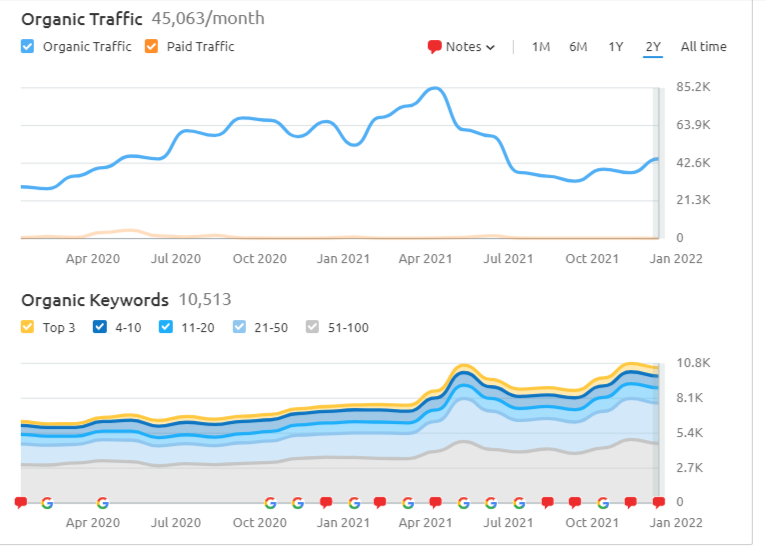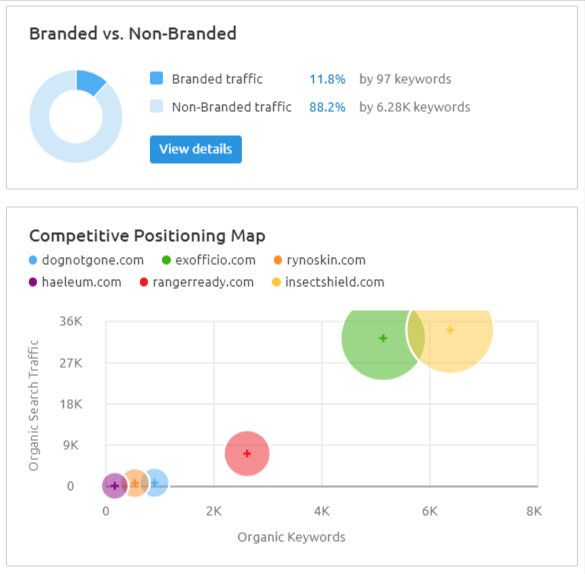Here’s a look at Insect Shield’s growth in 2020 and 2021 on the organic search channel. Our business is highly seasonal, peaking in the spring. Compare April 2020 traffic to April 2021.
I did the work myself using Shopify, SEMrush, Google Search Console, Screaming Frog, Google Analytics, various keyword research tools, and a lot of hands on experience gained over the years.
Note the progress we have made against our number one competitor, Amazon. We overtook them in June of last year. Today our visibility in SERPs for high conversion rate keywords like “insect repellent clothes”, “women’s insect repellent clothes”, and dozens more, is 43% vs. their 31% (bottom chart).
In July 2021, we added commercial content to one of our top informational search intent pages about insects. We saw a drop in overall traffic, but a significant improvement in conversions from that landing page. We will continue this strategy with other informational pages in 2022.
In the B2C world, very few eCommerce websites can beat Amazon for commercial search intent keywords, which is one reason B2C companies have to sell on Amazon to keep up. Amazon is no longer just an additional sales channel, it’s an absolutely essential sales channel. But which one would you rather have rank number one in search results on Google and Bing?
Do you want to pay the 15% fee to Amazon, as well as having to constantly give in to their methods of squeezing you on profit margins AND get no access to user information, like email or SMS messaging sign ups, and return purchase and life-time value metrics? Or would you rather sell from your own website, keep your own profit margin, and get all that highly valuable user data? The choice is obvious: optimize your own website for organic search, and then, of course, optimize your Amazon product descriptions for search, as well. McBuzz Communications can help you do both.


![]()